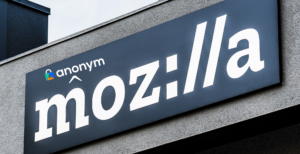Integral Ad Science had a decent Q1 – especially in comparison to its direct competitor, DoubleVerify.
Total revenue for IAS, which released its first quarter numbers on Thursday, was up 8% year over year to $114.5 million, and the company raised its full-year revenue outlook from $533 million to $541 million.
IAS’s stock ticked up just over 13% in after-hour’s trading.
DoubleVerify, meanwhile, reported earlier in the week that it generated $141 million in total Q1 revenue. But DV’s stock tumbled more than 36% after the market closed Tuesday following the news of its lowered full-year guidance.
But IAS’s respectable quarter aside, there’s an elephant in the room: Advertisers, publishers and ad tech platforms are frustrated with third-party brand safety and ad verification providers and the opacity of their methodologies.
This discontent is increasingly bubbling to the surface.
(Thank you, Shutterstock, for the perfect visual illustration of my mixed metaphor.)
IAS on MFA
The rise of made-for-arbitrage content – or, more accurately, the online ad industry’s current obsession with this long-standing issue – is the source of some of this discontent.
Buyers, sellers and their vendor partners alike wonder why MFA subdomains, like the one that Forbes ran until recently at www3.forbes.com, slip blithely through the cracks.
It’s a relevant question.
IAS released an MFA detection tool last year and an updated version in March that draws a distinction between MFA sites that are specifically built for ad arbitrage and so-called “ad clutter” sites. The latter aren’t necessarily designed for arbitrage but do have a high ad-to-content ratio and heavy ad load, which can lead to low campaign performance.
According to IAS CEO Lisa Utzschneider, advertiser clients have been “leaning into the product” – and for good reason.
“I’m sure you’ve seen the third-party reports that say advertisers are wasting up to 20% of their ad spend on MFA sites,” Utzschneider said. “Our MFA solution is the first to measure and optimize against both MFA and ad clutter sites to drive maximum efficacy across the programmatic buying process.”
The socials and the streaming
Which is fine, but open web programmatic isn’t what IAS is banking on for growth. That’s where social video and CTV come in.
Publisher revenue increased 10% to $15.8 million in Q1, a reflection, Utzschneider said, of partnerships between TV manufacturers and Publica, IAS’s CTV ad server.
Advertisers are also shifting their budgets to “capture the explosive growth” of short-form video, Utzschneider said. Social media measurement revenue grew 40% YOY in Q1 and represented 21% of total revenue for the quarter (compared with 18% in Q4).
IAS attributes this growth to adoption of its total media quality measurement product for brand safety and suitability measurement across Snap, TikTok, YouTube and Meta. Advertisers on Meta alone represent more than 40% of IAS’s social media revenue.
Speaking of social, Utzschneider also gave a shoutout to the brand-safety-beleaguered X, which uses IAS’s brand safety and suitability tech, including a tool for prebid optimization.
“We’ve been partnered with X for over six years,” Utzschneider said, “and we continue to lean into our X partnership to innovate on behalf of X and the brands that are running on X.”
Brands running on X … so, Cheech & Chong’s gummy company, then?
















